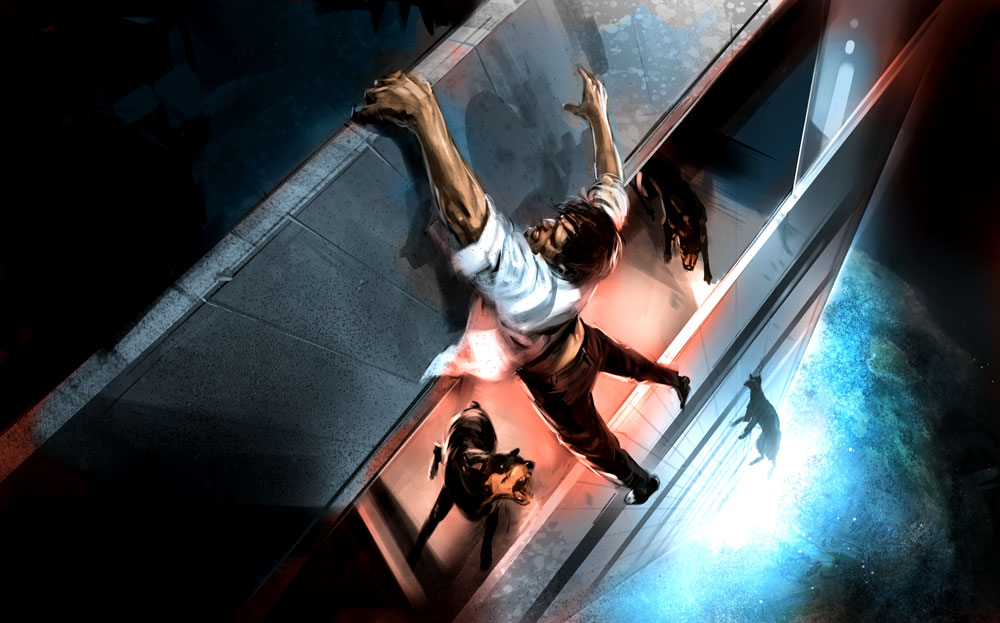Some of the very first game design classes I took were courses on 3d modeling. The software we used was 3ds Max. Version 2008, if memory serves. Those who are familiar with 3ds Max and it’s particular legacy know that it’s a program that was heavily derived from engineering software of the same vein as AutoCAD. The interface was obtuse, to say the least. The terminology the user was presented with on nearly ever level of the modeling process made very little sense unless you had a master’s degree in geometry. Max 2008 still had it’s roots firmly planted in a prototyping lab somewhere and didn’t make any apologies about it. Of course, if I had to pick one part of the program that was particularly impossible and frustrating, the one part of the whole baroque mess that made you want to pull your hair out more than anything else, it was the materials editor. By a mile.
Putting together a material in 3ds Max meant scaling walls of Windows-NT-grey interface gibberish three miles high with nothing but your bare hands and a prayer. Empty, unlabeled blanks accompanied by uselessly technical flyout menus and what seemed like hundreds of tiny, tiny little buttons emblazoned with icons that might as well have been words in a dead language for all they told you. As if that weren’t bad enough, you can add to that some truly ludicrous design decisions on the part of the developers. I vividly recall Nic asking me, after a particularly vitriolic meltdown, if I’d “hit the checkerboard button.” I of course had not hit the checkboard button, no one ever hits the checkerboard button. The reason for this is because the “checkerboard button” is this tiny little thing about 32 pixels by 32 pixels tagged onto the lower left-hand corner of the material editor. Please note that in the history of all user interfaces that have ever been made by anyone at all anywhere, nothing important has ever gone in the lower left-hand corner of a window. Ever. This may lead you to the entirely reasonable assumption that the “checkerboard button” isn’t all that important. However its purpose is to make the materials you’ve just spent the last seventeen hours of your life cobbling together and applying to your model actually show up. That this is off by default makes me want to kick somebody in the crotch.
So now that I’ve got you cued up to that image, let me change course here with the understanding that I’ll bring all of this around full-circle and it’ll all make some kind of sense.
If I were to say “X-COM,” what would that mean to you? If you’re my age (35 at the time of this writing) you might have memories of this game on old 386 PCs or possibly something like a Commodore Amiga. X-COM is held up as this paragon of PC gaming. It was almost a perfect balance of blowing things up, gun-porn, survival horror, and fetishistic strategy-game micromanagement. To really understand what kind of game it was you kinda have to see it. (Bear in mind that this a crazy OP drop team being run by a guy who’s found all the holes in the system, knows where all the boss aliens are standing, etc)
Of course if you’re a little younger, then X-COM might bring to mind something more like this.
That’s footage of the new X-COM that’s being developed by 2K Games, of Bioshock fame. You would not believe the kind of hate this game is getting from the old-schoolers. The initial complaints were based on the supposition that the whole game was just going to be an FPS that used the X-COM license (which would have admittedly sucked) but I had enough faith in 2K to believe that they aren’t going to just make some attempt to cash-in on an old license at the expense of the people who are most likely to buy the game. Sho’ nuff, I was right. Now fair warning, that’s a link to a 20 minute video that’s hung on several Kotaku articles that you might not have the patience to read after wading through this, so I’ll just go ahead and give you the sharp edges right now.
A) The new X-Com is not “just a shooter.”
B) THS ISNT EXZACTLY THE SME GAME I PLAYD WEN I WAS 14!!!!!1! RAAAAAAAAGGGGGGGGEEEEEEEEEEEE!!!!!! (Check the comments)
I won’t spare any words reasoning why having an FPS as your central gameplay element is better than an isometric turn-based strategy game. That’s not the issue here.
Right.
So 3ds Max 2012 was released ealier this year, and one of the really neat things they did with it was a total re-design of the material editor. Now instead of blanks with little buttons that don’t tell you anything, they have this graphical interface that lets you wire texture files into a final product that goes on your models. I think they even got rid of the checkerboard button. It’s not a total walk in the park to use just because it’s a complicated process, but now at least it’s not absolutely impenetrable. They were able to make an interface like because these days the devlopers can count on having the processing horsepower to make something like this run. They bothered because they knew what they were using had some serious problems because of the technical limitations that it was build under in the first place.
So what’s the first thing I heard someone say about it? No lie: “This isn’t like the old editor. I don’t like it.”

